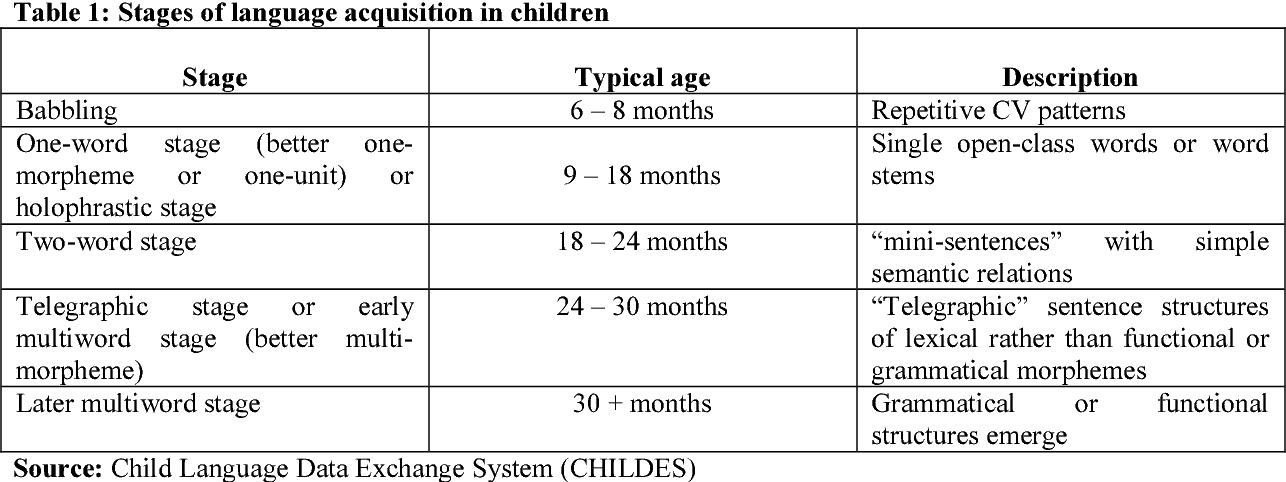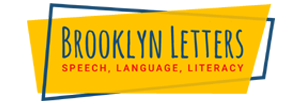30 MILLION WORD GAP

What is Language Development?
According to ASHA (American Speech-Language-Hearing Association), language development refers to the words we use and how we use them. This process begins in the utero stages of development. When the fetus begins to recognize the sounds and speech patterns of the mother. There are five stages of language development. The chart below describes each stage.

Abstract of: “The Thirty Million Word Gap”
The “30 Million Word Gap” study was declared a significant groundbreaking study. In 1992 researchers Betty Hart and Todd Risley entered the homes of 42 families from varied socio-economic backgrounds in Kansas City, Kansas, where they assessed exchanges of daily interactions between parent and child. Moreover, how those interactions shape language and vocabulary development. The experiment consisted of 13 high-income families, 10 families of middle socio-economic status, 13 of low socio-economic status, and 6 families who were on welfare and all predominantly African-American. They conducted monthly hour-long observations of each family from when the child was seven months until age three after analyzing 1,300 hours of observation. Hart and Risley concluded that children from wealthier families heard significantly more words on average than children of families with or below socio-economic status. Hart and Risley went as far as to calculate the difference in spoken words. Moreover, at age four, the difference between wealthy and low-income families was 32 million words. Coining the phrase “The 30 Million Word Gap.”
Importance of the Word Gap Study
The Hart and Risley study is important because it implies that children living in poverty hear fewer words on average than children from higher socio-economic families. Socio-economic status (SES) is defined as the social class of an individual or group and is measured by education, income, and occupation. These findings also depict a stigma on children from low economic backgrounds. SES examines inequities in access to resources. This also implies privilege, power, and control, meaning families from higher classes are exposed to more resources than children from lower classes, which caused flaws in the Hart and Risley experiment.
Readings on the Hart and Risley Study
Both articles, “New Research Ignites Debate on the “30 Million Word Gap” and “Let’s Stop Talking About The 30 Million Word Gap,” take different stances on the “word gap.” However, I take issue with Hart and Risley because their research at the time seemed genuine but flawed and incorporated SES bias, amongst other inequalities. It took much work to look past the constructive criticism. Arguably, The 30 Million dollar word gap study highlighted certain issues. Which created interventions such as “early childhood education, reading programs, and collaborations between education and health sector.” However, it does not resolve the political inequalities around the 30 million word gap. Political inequalities, meaning the structural differences in the distribution of political resources such as educational funding, healthcare, and financial support for minorities.
This article was more compelling and relatable as I am an educator in the classroom working predominantly with children living in poverty. Authors Dudley-Marling and Lucas takes a stance against Hart and Risley. A critical assessment of Hart and Risley’s study depicted significant flaws. For example, the sample size for the welfare families was not diverse enough and concluded insufficient data. Also, the significance of the criteria sample size should have been limited, e.g., activities, number of family members, and possible conversation topics. Such examples would have produced concise data. They continued to state ethnocentric bias and the absence of a theoretical framework. Ethnocentric bias is looking at outgroups (minorities) and judging them based on the norms and standards of their culture. I feel particular, Hart and Risley singled out families at or below SES in their research. Withstand, the theoretical framework is a structure used to support the theory of research study. A framework introduces, examines, and describes why the research study exists. In this case, Hart and Risley wanted to “assess how daily exchanges between a parent and child shape language and vocabulary development.” They failed to consider that many cultures do not address children directly, which can hinder data. Moreover, failing to make explicit the theory of language and culture that frames their analysis—granted, “Pathologizing the Language and Culture of Poor Children.”
ABOUT THE AUTHOR

Santina Williams
Santina Williams is an educator and behavioral therapist. She graduated with a bachelor’s degree in Speech Pathology and Audiology and plans to pursue her master’s degree in Spring 2022. During her professional career, Santina has had the opportunity to work with a variety of populations and disorders. As an Applied Behavioral Analyst, she has gained experience working with children on the autism spectrum. She has also gained extensive experience working with students with varying special needs within the Department of Education, providing accommodations and modifications within the classroom.
Chat with Us Today! Our Speech Languge Pathologists are ready to help you right now!
FREE CONSULTATION!!!
Call: (347) 394-3485, Text: (917) 426-8880
Email: [email protected]
(we respond to email right away!)
Craig Selinger
Latest posts by Craig Selinger (see all)
- NYC Middle School Transition Support Group - April 7, 2024
- Understanding Toddler Neurodevelopmental Evaluation - April 3, 2024
- Rare Diseases in New York City - February 29, 2024












